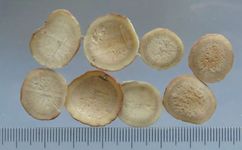
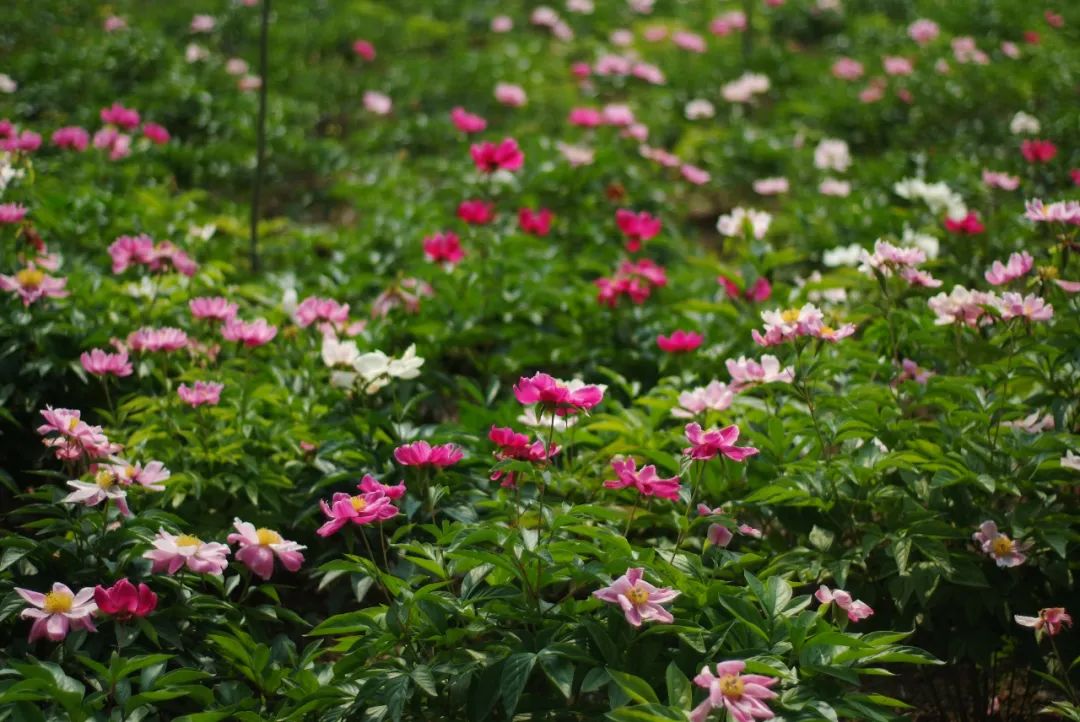
As spring transitions to summer, the peony flowers bloom abundantly, filling the mountains with their beauty in May.The peony has a history of over three thousand years, celebrated for its color, fragrance, and elegance, and was historically referred to as the flower of love. The “Book of Songs” records: “The gentleman and lady jest with each other, gifting peonies to one another.”The name “peony” is derived from the “Compendium of Materia Medica,” which states: “Peony is graceful and beautiful. This herb’s flower is elegant, hence its name.” The “Record of Famous Physicians” refers to it as “delicate beauty”; the “Ancient and Modern Annotations” calls it “Jiang Li” or “Li grass.”Peonies are categorized into medicinal and ornamental types, with the medicinal varieties being more monochromatic and the ornamental varieties being diverse and colorful.01The medicinal peonies are divided into Bai Shao (White Peony) and Chi Shao (Red Peony).
The medicinal peony’s root is used in medicine, and the dried flowers can be brewed as herbal tea.
Clinically, Bai Shao and Chi Shao are commonly recognized.Before the Tang Dynasty, both were referred to simply as peony, with no difference in efficacy. It was only after the Tang Dynasty that the distinction between Bai Shao and Chi Shao emerged. By the Song Dynasty, the two were clearly differentiated, with Bai Shao being a blood tonic and Chi Shao being a heat-clearing and blood-cooling herb. Their properties, processing methods, efficacy, and compatibility differ significantly.
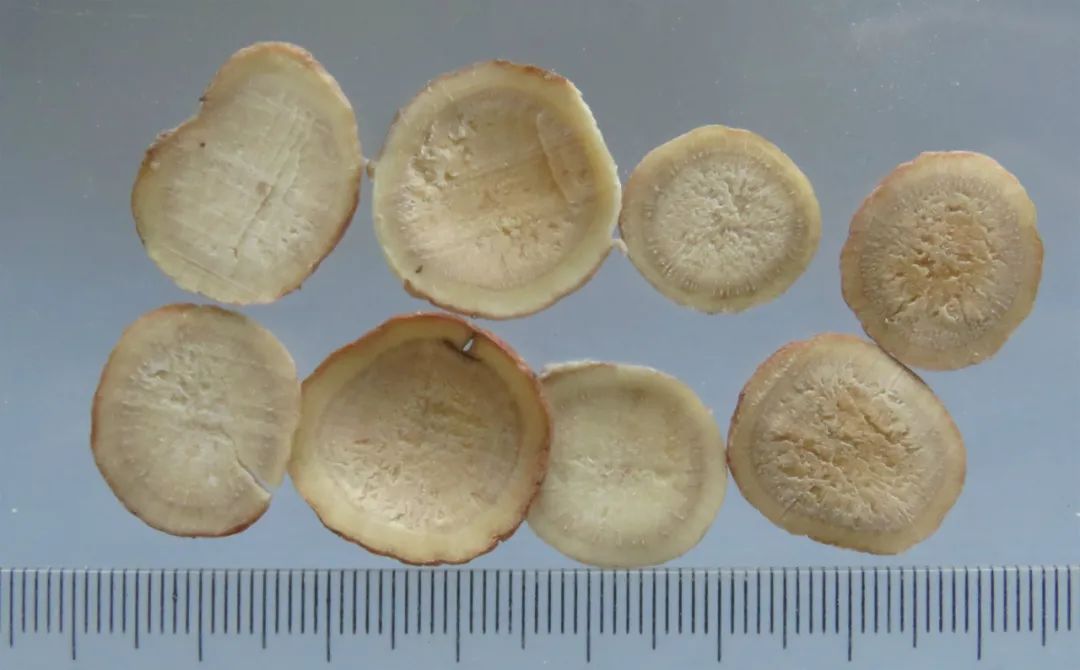
▲ Bai Shao slices
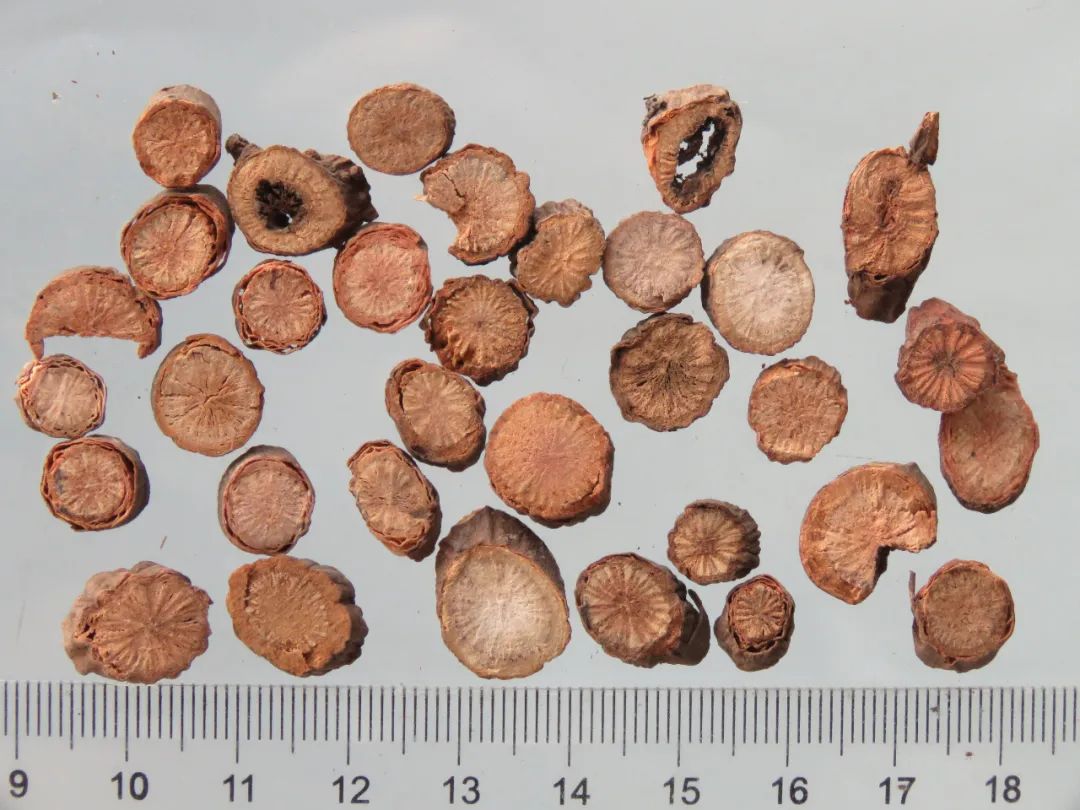
▲ Chi Shao slices
The “Chinese Pharmacopoeia” records the origins and effects of Bai Shao and Chi Shao as follows:
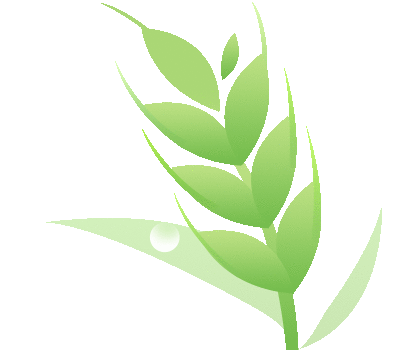 Bai Shao
Bai Shao
The dried root of the peony plant from the Ranunculaceae family. Harvested in summer and autumn, cleaned, with the heads and tails and fine roots removed, boiled in water, and then dried.
【Properties and Channels】Bitter, sour, slightly cold. Enters the liver and spleen channels.
【Functions and Indications】Nourishes blood, regulates menstruation, astringes yin and stops sweating, softens the liver and alleviates pain, and pacifies liver yang.
Used for blood deficiency, yellowing of the skin, irregular menstruation, spontaneous sweating, night sweats, flank pain, abdominal pain, limb cramps, headaches, and dizziness. Modern research has found that the main active components in Bai Shao include paeoniflorin, paeonol, and total glycosides of Bai Shao, which have anti-inflammatory, analgesic, hepatoprotective, immune-regulating, and antidepressant effects.
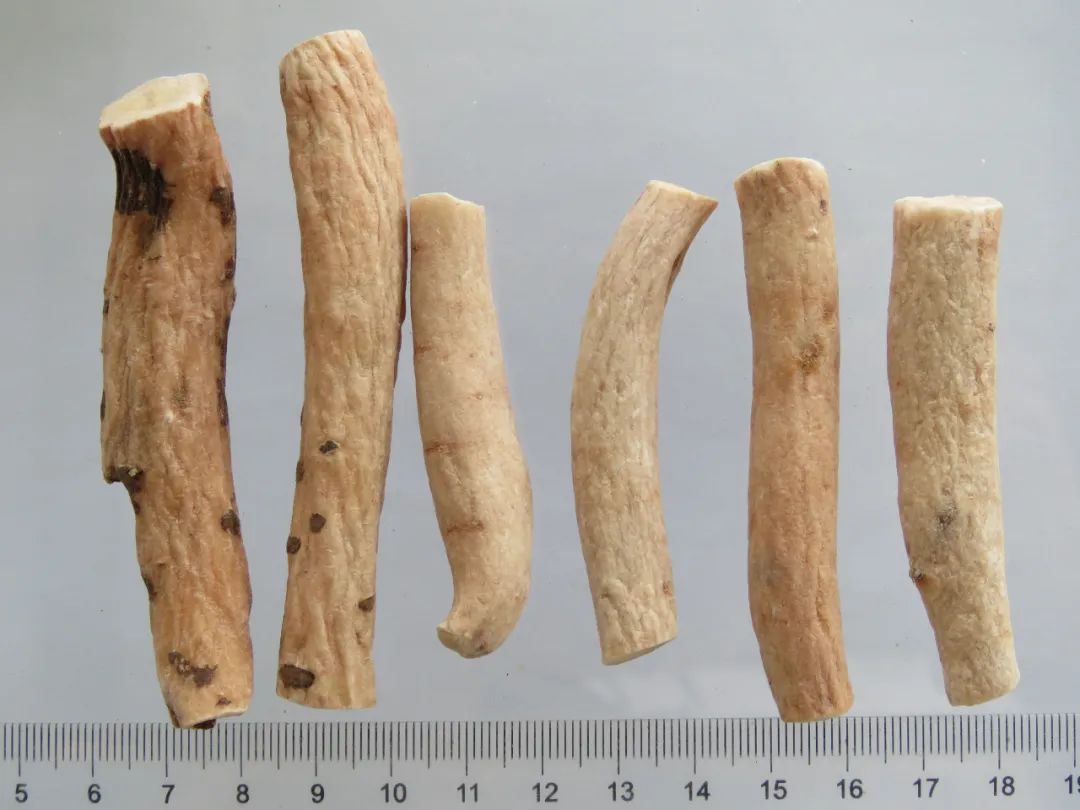
▲ Bai Shao herb Chi Shao
Chi Shao
The dried root of the peony or Chi Shao from the Ranunculaceae family. Harvested in summer and autumn, with the rhizomes, fibrous roots, and soil removed, and then dried.
【Properties and Channels】Bitter, slightly cold, enters the liver channel.
【Functions and Indications】Clears heat, cools blood, disperses stasis, and alleviates pain.
Used for warm toxin-induced rashes, hematemesis, epistaxis, red and painful eyes, liver qi stagnation with flank pain, dysmenorrhea, abdominal pain from masses, trauma, and abscesses.
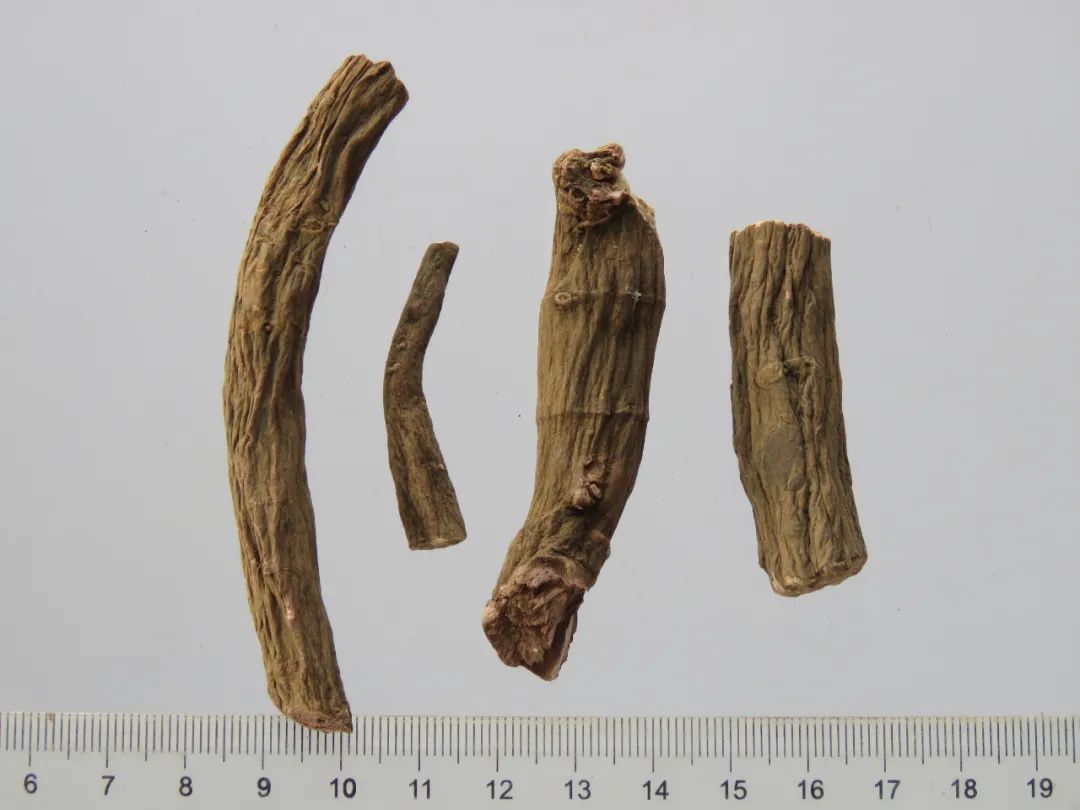
▲ Chi Shao herb02Comparison of Bai Shao and Chi Shao
1. In terms of origin, Bai Shao and Chi Shao belong to the same family, genus, and species, but Chi Shao has an additional source, “Chuan Chi Shao,” which is less commonly found in the market; Bai Shao is mostly cultivated, primarily produced in Zhejiang, Anhui, and Hunan provinces. Chi Shao is mostly wild, primarily found in the three northeastern provinces and Inner Mongolia;
2. In terms of characteristics, Bai Shao roots are generally thick and robust with a delicate skin, while Chi Shao roots are often slender and long with a rough exterior.
3. In terms of processing methods, Bai Shao requires boiling to remove the skin or boiling after peeling, while Chi Shao is dried without peeling.
4. In terms of efficacy, Bai Shao is “good at guarding,” excelling in nourishing blood and astringing yin. Chi Shao is “good at moving,” excelling in cooling blood and dispelling stasis.
03Bai Shao Medicinal Dishes
As we transition from spring to summer, Associate Chief Pharmacist Wang Xiaoying from the Affiliated Hospital of Guangzhou Medical University introduces several Bai Shao medicinal dishes: nourishing the liver, preventing wind invasion, and combating depression.

Bai Shao Pig Liver Soup
Ingredients
10g Bai Shao, 5g Gui Zhi (Cinnamon Twig), 3 slices of fresh ginger, 3 dates, 100g pig liver.
Preparation
(1) Rinse Bai Shao and Gui Zhi, soak; wash and slice ginger; wash and pit dates; clean and slice fresh pig liver, set aside.
(2) In a clay pot, add 2 bowls of water, add Bai Shao, Gui Zhi, ginger, and dates, bring to a boil, then simmer for 20 minutes, strain out the dregs, and retain the liquid.
(3) Pour the liquid back into the pot, bring to a boil, add the pig liver slices, a pinch of salt, and chopped green onions, cook until done, and serve hot.
Effects
Harmonizes the nutritive and defensive qi, nourishes blood, and relieves depression.

Four Substance Meat Soup
Ingredients
5g Bai Shao, 5g Shu Di Huang (Rehmannia Root), 5g Dang Gui (Angelica), 3g Chuan Xiong (Szechuan Lovage), 250g chicken or lean meat, 3 slices of fresh ginger.
Preparation
(1) Rinse Bai Shao, Shu Di Huang, Dang Gui, and Chuan Xiong, soak; wash and slice ginger; blanch chicken or lean meat, set aside.
(2) In a clay pot, add appropriate amount of water, add Bai Shao, Shu Di Huang, Dang Gui, Chuan Xiong, ginger, and chicken or lean meat, bring to a boil, then simmer for 1 hour, add salt to taste.
Effects
Nourishes blood and regulates menstruation.

Three White Meat Soup
Ingredients
5g Bai Shao, 5g Bai Zhu (Atractylodes), 5g Fu Ling (Poria), 150g pork ribs or 100g lean meat, 3 slices of fresh ginger.
Preparation
(1) Rinse Bai Shao, Bai Zhu, and Fu Ling, soak; wash and slice ginger; blanch pork ribs or lean meat, set aside.
(2) In a clay pot, add appropriate amount of water, add Bai Shao, Bai Zhu, Fu Ling, ginger, and pork ribs or lean meat, bring to a boil, then simmer for 1 hour, add salt to taste.
Effects
Tonifies qi and blood, beautifies and moisturizes the skin.
04Usage Precautions
Bai Shao should not be used with Li Lu (Veratrum) and is not suitable for conditions of yang deficiency and cold.
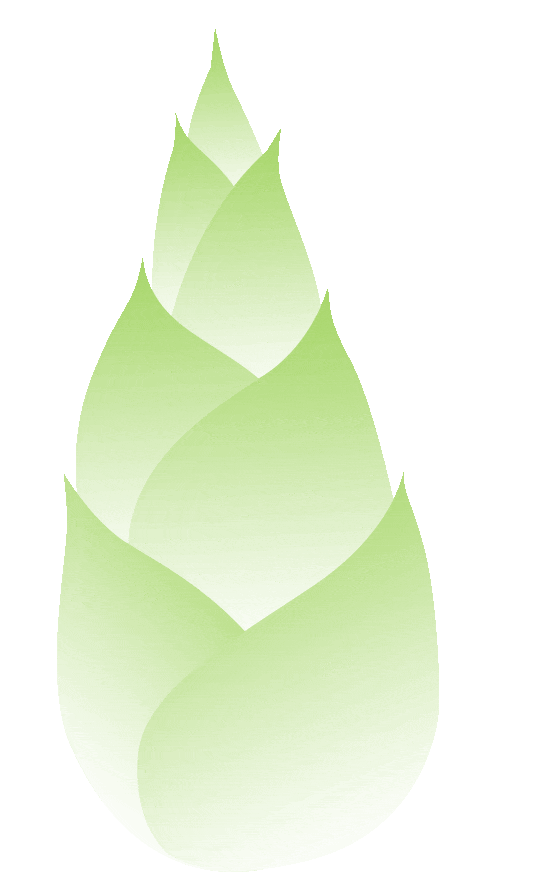
Source: Guangdong Traditional Chinese Medicine


